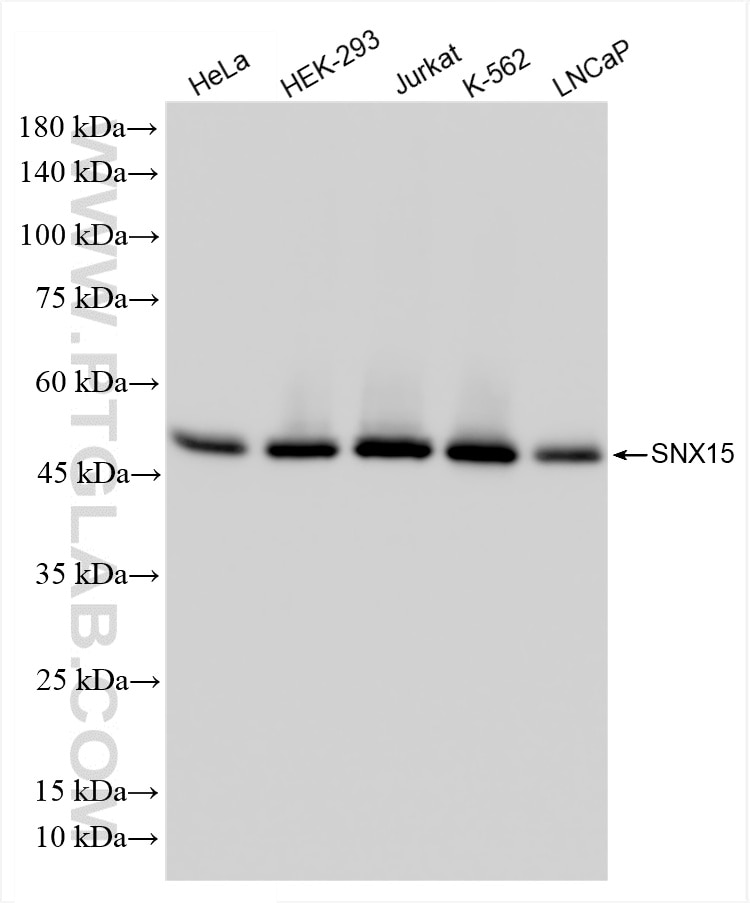Tested Applications
| Positive WB detected in | HeLa cells, HEK-293 cells, Jurkat cells, K-562 cells, LNCaP cells |
Recommended dilution
| Application | Dilution |
|---|---|
| Western Blot (WB) | WB : 1:5000-1:50000 |
| It is recommended that this reagent should be titrated in each testing system to obtain optimal results. | |
| Sample-dependent, Check data in validation data gallery. | |
Product Information
85909-3-RR targets SNX15 in WB, ELISA applications and shows reactivity with human samples.
| Tested Reactivity | human |
| Host / Isotype | Rabbit / IgG |
| Class | Recombinant |
| Type | Antibody |
| Immunogen | SNX15 fusion protein Ag9006 Predict reactive species |
| Full Name | sorting nexin 15 |
| Calculated Molecular Weight | 342 aa, 38 kDa |
| Observed Molecular Weight | 50 kDa |
| GenBank Accession Number | BC009897 |
| Gene Symbol | SNX15 |
| Gene ID (NCBI) | 29907 |
| Conjugate | Unconjugated |
| Form | Liquid |
| Purification Method | Protein A purification |
| UNIPROT ID | Q9NRS6 |
| Storage Buffer | PBS with 0.02% sodium azide and 50% glycerol, pH 7.3. |
| Storage Conditions | Store at -20°C. Stable for one year after shipment. Aliquoting is unnecessary for -20oC storage. 20ul sizes contain 0.1% BSA. |
Background Information
SNX15 belongs to the sorting nexin family and is involved in several stages of intracellular trafficking. Overexpression of SNX15 results in a decrease in the processing of insulin and hepatocyte growth factor receptors to their mature subunits (PMID: 11085978). SNX15 is widely expressed, with the highest expression in skeletal muscle, heart, brain, kidney, spleen, thymus, and small intestine.
Protocols
| Product Specific Protocols | |
|---|---|
| WB protocol for SNX15 antibody 85909-3-RR | Download protocol |
| Standard Protocols | |
|---|---|
| Click here to view our Standard Protocols |



